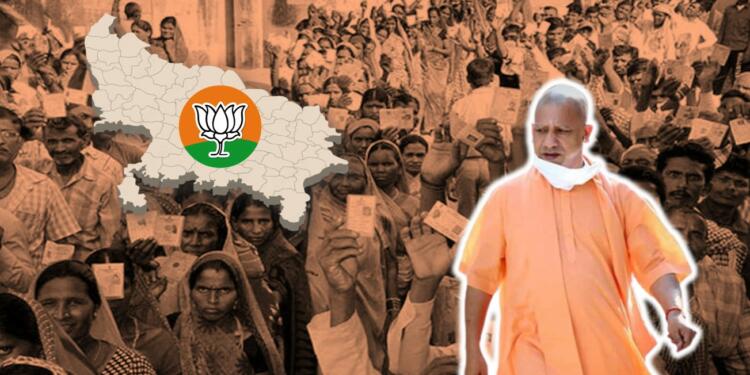BJP is an urban party. You must have heard this innumerable times. But does it still hold true? The answer is no. BJP’s massive victory in Uttar Pradesh advocates for its rural presence.
Read More: Yogi and the BJP busted the myth of Muslim-Jat Ekta in the UP elections
BJP: A party of ‘urban’ India
Bhartiya Janata Party traces its roots in Bhartiya Jana Sangha formed by Syama Prasad Mookerjee. After its establishment, it gained a substantial foothold in the Hindi speaking regions, especially of north India. The party since its establishment has witnessed an upward graph under the leadership of Pt. Atal Bihari Vajpayee, Lal Krishna Advani and Murli Manohar Joshi.
Also Read: Mysterious but a ‘Possible Political assassination’ of Dr. Syama Prasad Mookerjee
Also, the BJP since its establishment has been called out for being a party that only caters to the upper caste and upper class. Urban voters were considered to be the traditional vote bank of the Bhartiya Janata Party.
Also Read: Modi-Yogi win is not only beneficial for BJP but also for the Indian economy
The tag designated to the party was not very farfetched, rather its roots can be traced to its ideology. BJP from, the beginning, believed in development. The Gujarat model presented to the people before the 2014 Parliamentary elections not to mention was the urbanization of Gujarat.
BJP has a particular Modes Operandi. The saffron party, after coming to power, set its prime focus on infrastructural developments and connectivity. With all these, BJP targets to bring in investment that in turns results in urbanization, giving BJP the tag of being an urban party with a traditional urban vote bank.
Also Read: The need for Indianization of the Indian constitution in the BJP rule
A shift in BJP’s Paradigm
Well, BJP in the last decade has expanded its base in the semi-urban and rural sectors. Not only has the massive victory of BJP in the 2019 Parliamentary election but also the 2022 Assembly elections supported this fact. And the opposition parties who wanted to ride on the rural votes had suffered major jolts.
The win in the Parliamentary elections in 2019 by crossing the 300 mark did not come as a surprise, but the scale of it was something only a few had anticipated. The major reason later analysed was the en mass voting of the rural sector in favour of the BJP. The main effort that consolidated the votes was the step of BJP to address the rural distress.
The BJP left no stone unturned, in its ‘ruralisation’. Several schemes like the Ujjawala Yojna, health insurance schemes like Ayushmaan Bharat went in favour of the BJP, as the rural voters thought after a long time, that the government is thinking and working for them.
UP’s massive victory tells a different tale
There were wide speculations by the self-acclaimed political pundits that there is an anti-incumbency factor in UP. But CM Yogi’s victory juggernaut has proved them all wrong. UP’s BJP government had a particular style of working as well as campaigning that translated to its victory.
Law and order situation
Every government cares for the law and order in its capital or the major cities so that its image is not at all dented. But the UP government under CM Yogi Adityanath thought of every girl and woman, residing in a distant village. The Yogi government applied a zero-tolerance policy to crime and criminals and that went in favour of them, both in the rural as well as the urban sector.
Welfarism and the ‘labhharti varg’
The constant effort to align the rural sector with the mainstream has proven to be beneficial to the BJP. The BJP governments both at the centre and the state levels have run several schemes like providing gas cylinders, electrification of villages, distribution of free rations, health insurance schemes etc.
Not only the welfare schemes were run on a large scale, but also the beneficiaries of the schemes were made the brand ambassadors for the governments and their schemes. And this was not possible with volunteers.
BJP’s unpaid volunteers
BJP is a cadre-based party. At a time when other political parties were suffering from cadre crunch, the BJP was not sweating as it had already made its grip firm on social media.
The virtual rallies of the BJP were not just watched by the people holding handsets but reached villages with the help of volunteers who worked for the BJP tirelessly, not for monetary benefits, but for the sake of expanding its base.
It is an unsaid truth that the line between urban and rural India are blurring under the BJP’s rule and this, in turn, is helping the saffron party expand its appeal to the rural sector as well.

































